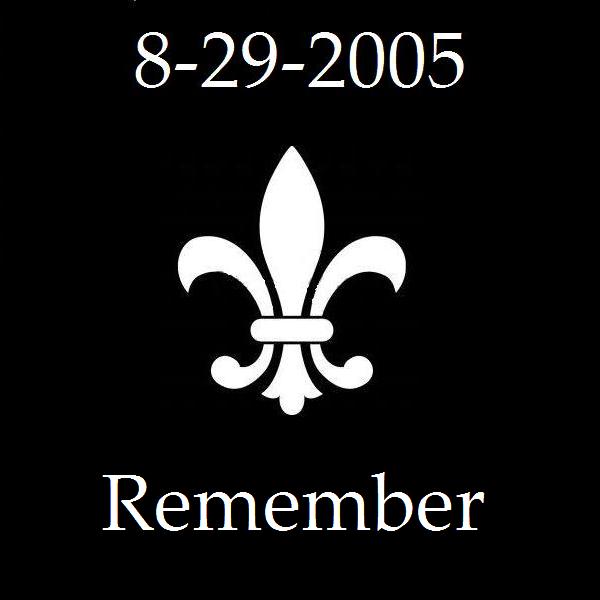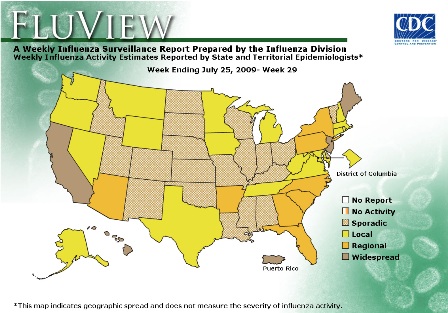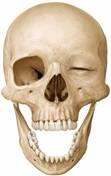Influenza: Evidence Based Resources is a FREE database offered by EBSCO Publishing (from whom the Libraries purchase a number of databases). It is comprised of selected resources from a number of its health related databases. And includes information for clinicians, nurses and patients.
The Louisiana Department of Health and Hospitals has released its Influenza Surveillance Report through the end of August. It finds that:
11% of swine flu patients are 4 or younger.
70% are 5 to 24 years old
18% are 26-64
1% are 65 are older
Further the report states that “there are 737 lab confirmed cases of 2009 Influenza A (H1N1) in Louisiana. Based on an extrapolation from CDC data, the real case count in Louisiana is closer to 39,000.”
Don’t forget to follow the CDC guidelines for staying healthy.
Paul Ehrlich developed what is now recognized as the first chemotherapy agent 100 years ago. On August 31, 1909 his 606th compound of arsenobenzene was developed. He was searching for a way to treat syphillis.

Four years later, a memorandum of understanding is signed for a new public-private teaching hospital.
With reports the past weeks of daycare center closings, sidelined football players, and sniffling sorority girls, clearly Louisiana is not immune from H1N1 outbreaks. As of August 17, 2009, Louisiana reports 449 confirmed cases and 1 related death (also in New Orleans) from the novel influenza A (H1N1) virus, aka the Swine Flu.
For local & state information on influenza, visit www.FluLa.com, from the Louisiana Department of Health and Hospitals. There you will find weekly statistics and public health updates, as well as flu information for patients in English, Spanish and Vietnamese. Clinicians can also access an Online Training Course on local flu preparedness, testing protocols, regional OPH offices, and info from the Louisiana Office of Public Health Lab like the Lab 96 form and instructions for swine flu testing.
For national swine flu information, the CDC is always your best bet: http://cdc.gov/h1n1flu/
Once a year, New Orleans Magazine publishes a list of the Top Doctors in the greater New Orleans area; this list is compiled from a database created by Best Doctors in America. This year there were 564 listings from 66 specialties; the list is created by asking area physicians who they would want to treat an ill family member. Two LSUHSC physicians were featured Kim Edward LeBlanc and Cleveland Moore. Congratulations to everyone on the list!
Allergy & Immunology
Luis R. Espinoza
Cleveland Marvin Moore
Ricardo Sorenson
Cardiovascular Disease
David Lucas Glancy
Critical Care Medicine
Christopher C. Baker
Carol M. Mason
Steve Nelson
Warren Richard Summer
Dermatology
Brian David Lee
Lee T. Nesbitt, Jr.
Endocrinology & Metabolism
Alfonso Vargas
Family Medicine
Kim Edward LeBlanc
Herbert L. Muncie, Jr.
Infectious Disease
Rebecca Adair Clark
Michael Edward Hagensee
David H. Martin
Charles V. Sanders
Internal Medicine
John R. Amoss
David M. Borne
Angela M. McLean
Medical Oncology & Hematology
Lowell Anthony
Neurology
John D. England
Anne L. Foundas
Amparo (Amy) Gutierrez
Piotr Wladyslaw Olejniczak
Austin John Sumner
Nuclear Medicine
Richard J. Campeau, Jr.
Obstetrics & Gynecology
Martha Johnston Brewer
Ralph R. Chesson, Jr.
Felton L. Winfield, Jr.
Orthopaedic Surgery
Andrew G. King
Otolaryngology
Rohan Walvekar
Pain Medicine
Alan David Kaye
Stephen Kishner
Pathology
Randall Douglas Craver
Gary E. Lipscomb
William Proctor Newman III
Pediatric Allergy & Immunology
Cleveland Marvin Moore
Ricardo Sorenson
Pediatric Anesthesiology
Stanley Martin Hall
John Frederick Heaton
Pediatric Cardiology
Robert Joseph Ascuitto
Nancy Tamara Ross-Ascuitto
Aluizio Roberto Stopa
Pediatric Gastroenterology
Raynorda F. Brown
Pediatric Hematology-Oncology
Renee V. Gardner
Tammuella E. Singleton
Maria C. Velez
Lolie Chua Yu
Pediatric Nephrology
V. Matti Vehaskari
Pediatric Orthopaedic Surgery
Andrew G. King
Pediatric Pathology
Randall Douglas Craver
Pediatric Rheumatology
Abraham Gedalia
Pediatric Specialist/Child & Adolescent Psychiatry
Charles C. Coleman
Debra DePrato
Martin J. Drell
Humberton Quintana
Pediatric Specialist/Neonatal-Perinatal Medicine
Brian Barkemeyer
Staci Olister
Duna Penn
Dana Rivera
Pediatric Specialist/Neurology, General
Stephen Russell Deputy
Ann Henderson Tilton
Maria Weimer
Pediatric Specialist/Neurology, Neuromuscular Disease
Ann Henderson Tilton
Pediatric Surgery
Charles Baker Hill, Jr
Pediatric Urology
Joseph Ortenberg
Physical Medicine & Rehabilitation
Stephen Kirshner
Psychiatry
James G. Barbee
Jose Calderon-Abbo
Charles C. Coleman
Erich J. Conrad
Debra Deprato
Howard Joseph Osofsky
Mark Harold Townsend
Pulmonary Medicine
Juzar Ali
Carol M. Mason
Steve Nelson
Judd Ernest Shellito
Warren Richard Summer
David Allen Welsh
Rheumatology
Luis R. Espinoza
Sleep Medicine
Piotr Wladyslaw Olejniczak
Surgery
Christopher C. Baker
J. Philip Boudreaux
John Patrick Hunt III
Surgical Oncology
Eugene A. Woltering
Urology
Sean Collins
Harold Anthony Fuselier, Jr
Jack Christian Winters
Vascular Surgery
Larry Harold Hollier
It’s not just my imagination. There really are more first year medical students this year. Welcome to campus!

CDC’s Advisory Committee on Immunization Practices (ACIP) published the 2009 guidelines for the use of influenza vaccine for the prevention and control of seasonal influenza on July 30th, 2009. These guidelines are for seasonal flu, for which there are vaccines, and not swine flu, though clinical trials are underway for the H1N1 virus.
“Flu season” generally runs October – May. During these months, the CDC collects and publishes weekly influenza surveillance reports, like the one shown above. In fact, you can even get flu updates sent to your phone.
Who needs the seasonal flu vaccine? Health care workers, for one, as well as young children, the aged, pregnant women and people with chronic medical conditions. LSUHSC – NO usually offers flu shots for a small fee during the month of October.
More flu information from the CDC.

The 2010 edition of the Centers for Disease Control and Prevention?óÔé¼Ôäós Yellow Book includes new or expanded sections on medical tourism, traveling safely with chronic diseases and conditions, and expert perspectives on popular travel itineraries worldwide. The updated book, which is a definitive guide for healthy international travel, is now available online.
July is full of space anniversaries, from the moon landing (July 15th) to the establishment of Cape Canaveral (July 24th), but what did this mean for medicine?
To understand the history of a medical subject, I sometimes check out its history in MeSH. The current subject is Aerospace Medicine and has been since 1980, but it was Aviation Medicine from 1966-74 and Space Flight from 1975-79. If a comprehensive historical search is required, it is always good to check out the Online & History Notes in MeSH.
Check out this article by SE Parazynski, a former astronaut and a physician, entitled “From model rockets to spacewalks: an astronaut physician’s journey and the science of the United States’ space program.” This article is freely available to the general public through PubMed Central.
July 21st is National Junk Food Day, but try not to go wild. According to the CDC, Louisiana went from having under 15% obesity rate in 1990 to a rate of 25-29% in 2008. If you’re going to celebrate today, just try to be smart and eat healthy the rest of the week.
The NOLA.com website just released a story on LSUHSC’s own Eduardo Davila. Dr. Davila, assistant professor pediatrics, has been awarded a $1.3 million grant over 5 years by the National Cancer Institute to study new immunotherapies, including a vaccine, for cancer. Read the LSUHSC press release for more information.
Looks like Louisianans haven?óÔé¼Ôäót been eating prepackaged Nestle Toll House refrigerated cookie dough and thank goodness.
As of Tuesday, June 30, 2009, 72 persons infected with a strain of E. coli O157:H7 with a particular DNA fingerprint have been reported from 30 states (None in Louisiana!). Of these, 51 have been confirmed by an advanced DNA test. More information is available from the CDC.
From Abbot’s tube (A long double-channel intestinal tube inserted through a nostril) to Zimmermann-Laband syndrome (an extremely rare inherited syndrome of gingival fibromatosis), whonamedit.com has it covered.
A biographical dictionary of over 8294 medical eponyms (people after whom something is named) and counting, whonamedit.com was created by a Norwegian group, and has been around since 1994.
What I really like about this site is the ease of use. Eponymns are listed alphabetically and by category, so if you want a list of all epoynms associated with the brain, it is quickly accessible.
There are also a fair number of biographical entries, which can be browsed by country and last name. There is a separate list of female entries. Many biographical entries also include bibliographies, which makes my little librarian heart flutter.
BOTTOM LINE:
Whonamedit.com is a great source to check synonyms and definitions of medical conditions, and offers a fair number of biographical entries for physicians. It’s layout makes it very easy to use as a quick reference source.
Here’s an anatomy site that is fun and educational at the same time.

WinkingSkull.com is an online study aid for anatomy. It’s provided through Thieme publishing, which also provides online atlases to our library users.
Offering several levels of access (my personal favorite is FREE), Winking Skull features stunning illustrations from Atlas of Anatomy, based on the work of Michael Schuenke, Erik Schulte, and Udo Schumacher. Once you’ve created a user name and password, it’s fast and easy to create exams based on region of the body. There’s a self study mode as well as a timed assessment feature, and your statistics are saved so you can see what you need to work on.
246 images are offered at the free level, but if you personally own either Atlas of Anatomy or Anatomy Flash Cards: Anatomy on the Go, you get access to the “Plus” version: 363 images from Atlas of Anatomy. For those who really want an extra anatomy study aid, there is a “Pro” account available for a monthly subscription. Freaking out about that anatomy exam? There’s even a 24 hour “Panic Package”
BOTTOM LINE
Winkingskull.com features a witty name, a 246 free anatomy images, and a great interface with wonderful pictures. Next time you’re bored in lecture, check out this game instead of MineSweeper.
DETAILS
-Requires creation of user profile (free)
-Free version offers 246 images
This post is simply an FYI and should not be taken as a product endorsement.

 myLSUHSC
myLSUHSC


